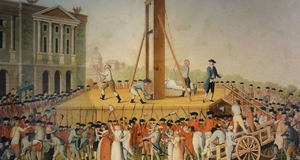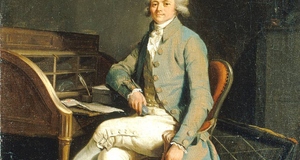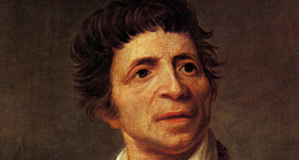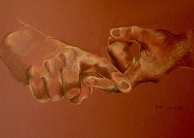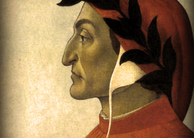Featured Article:The Power of Symbols: The Ideological Representations of a French Revolution Playing Card Deck, the RevolutionnairesThe French Revolution
Prior to the Revolution, France was fragmented into different regions, and those regions were governed by nobility and wealthy landowning aristocrats who generally did the King’s bidding. The entire country was segmented by groups – royalty, nobility (landowners and aristocrats by birth), aristocracy (landowners but not nobility), petit bourgeoisie (small business owners, craftsmen, artisans, teachers, etc.), clergy, and peasants. These social classes were not always clear-cut, however. The clergy, for example, had representatives of both the aristocracy, as well as the petit bourgeoisie and the peasantry. This describes the complicated and segmented nature of French society at the time: Before the revolution, French society was divided into three estates or orders. The Third Estate was by far the largest of these, containing around 27 million people or 98 per cent of the nation. The Third Estate included every French citizen who did not possess a noble title and was not ordained by the church. As might be expected within such a large group, the Third Estate was marked by considerable diversity. It housed many different classes and levels of wealth; many different professions and ideas; rural, urban and provincial people alike. Members of the Third Estate ranged from lowly beggars and struggling peasants to urban artisans and labourers; from the shopkeepers and commercial middle classes to the nation’s wealthiest merchants and capitalists. Despite its enormous size and importance to the nation, the Third Estate was politically disregarded and economically exploited by the Ancien Régime. The frustrations, grievances and sufferings of the Third Estate ultimately gave rise to the French Revolution …. Peasants were at the bottom of the Third Estate’s social hierarchy. Peasant farmers comprised between 82 and 88 per cent of the population and were the nation’s poorest social class. Though levels of wealth varied, even within the peasantry, it is reasonable to suggest that most French peasants were poor (Llewellyn & Thompson, 2015) Before the 1790s, France was embroiled in major wars abroad, and the French suffered from a series of crop failures, most notably the famine directly associated with wheat. Since bread was the single most important staple food group in France, the wheat famine created significant turmoil. Food shortages also meant that the price for food and, in an inflationary ripple effect, prices for many main commodities skyrocketed. And, with the massive costs incurred when fighting foreign wars, the King’s coffers were empty. As a result, the King imposed new taxes country-wide that frustrated the already devastating economic conditions for most the citizenry. The key word here, of course, is “most” – only the peasants and the petit bourgeoisie had to pay the higher taxes; the nobility, most of the aristocracy, and the clergy were spared. Many scholars offer different perspectives on the cause(s) of the French Revolution (Amariglio & Norton, 1991; Furet, 1978; Lefebvre, 1958; Lefebvre, 1967; Llewellyn & Thompson, 2015; Kropotkin, 1909). Instead of reviewing the many volumes that have been written on the subject, I believe this lengthy quote best summarizes this historical event:
Most scholars, however, agree that the growing economic discontent and inequitable social stratification that existed were the main precipitators of resistance, or, as Andress (2016) succinctly puts it, “the French state was lurching towards bankruptcy” (p. 22). There were many working parts that politically led to the Revolution, namely in-fighting among the aristocracy, backlash from nobility when the Third Estate was granted seemingly equal representation, and the growing political popularity of the Jacobins (Lefebvre, 1958). Nevertheless, historians generally agree that the formation of the National Assembly and its subsequent inability to please the various factions at odds with each other sparked riots and other violent outbursts that quickly spread and grew in intensity. And, since the “French Revolution is not only the Republic; [sic] it is also an unlimited promise of equality and a special form of change,” one thing is for sure: the Revolution was a contestation over ideology – “a radical break with the past, a tremendous cultural drive for equality” (Furet, 1978, p. 5, 25). After the takeover of the Bastille on July 14, 1789, it did not take long for the Jacobins to gain control (Lefebvre, 1967). As both an ideology and a “form of power,” the Jacobins embodied a “system of representations and a system of action” (Furet, 1978, p. 29). In their attempts to foster and institutionalize equality, liberty, and fraternity, their social experiment prompted many of the more radical revolutionaries to advocate for an expunging of loyalists and sympathizers of the former royalty and nobility. Known as the “Reign of Terror,” the new regime was responsible for one of the bloodiest events in history under the auspices of fomenting their construction of a “new” society:
Furthermore, Robespierre made the anti-nobility and monarchy position of the Revolution clear in his National Convention speech in September 1792: “Louis must die in order for the Revolution to live” (quoted in Linton, 2006). While much has been written condemning the Reign of Terror, it seems likely that the revolutionaries and the Third Estate “would have achieved nothing without the insurrections. The Old Regime did not bend before juridical revolution. Having taken to force, it was destroyed by force” (Lefebvre, 1967, p. 210). Of course, one of the most notable acts during the Terror was the seizure of noble lands after, of course, the land owners were beheaded. Despite the Terror, the Revolution ushered in a new constitution, new laws aimed at fostering equality, and a new government founded on the principle of protecting individual rights. During the genesis of the French Revolution, the republicans anxiously attempted to glue the country back together. In fact,
By “ridding itself of the symbolic powers of the State, along with the rules it imposed,” the revolutionaries not only sought to purge everyday representations of the Ancien Régime, but they also attempted to unite the various provinces and regions (Furet, 1978, p. 24). In fact, to “bridge the divide between the different regions of France and the different classes involved in the Revolution, symbols were used to convey certain ideals. The liberty cap, the tricolor flag, Marianne [the flag-waving lady of Liberty], and other symbols became important in the spread of Revolutionary ideas,” so much so that the “new Republic of the French Revolution needed symbols that were familiar to the people that signified unity and strength” (Cichoski et al., 2010). These symbols are not surprising; most new political regimes use symbols to represent certain values and to create an atmosphere of unity, and the French revolutionaries “left no stone unturned in their endeavor to get the republican message across” (Cichoski et al., 2010). Additionally, during this time, the Revolution incorporated political symbols in virtually all walks of life, not just official events and operations, including snuffboxes, furniture, fashion, bedposts, hand fans, and so on (Frey & Frey, 2004). This meant that,
As we will explore in a moment, we can certainly add playing cards to this list, since “everything, from cards to the almanac, was turned topsy-turvy” (Taylor, 1973, p. 172). In an attempt to unite diverse and often conflicting groups, the new Revolutionary regime compelled artisans, including playing card craftsmen, to represent the values and ideological principles of the Revolution in their work. Significance of the Republic Deck
The Revolutionnaires deck radically altered the standard French deck by adding the representations of the Revolution’s ideological principles. The court cards on the standard deck were replaced with cards signifying the values of the Revolution, or, as Morley (1989) describes, “During the French Revolution, it was not only the members of the Royal family, who were beheaded, but the Kings and Queens of all the suits were banished” too (p. 201). The Revolutionnaires deck, of course, is most notable in its radical departure from the standard, pre-Revolutionary deck. As we know,
Even the French game, piquet, “is a figurative representation of the French monarchy under Charles VII,” and “this much is certain, cards with the distinguishing marks of coeur, carreau, pique, and trèfle were undeniably in existence in the reign of Charles VII” (Taylor, 1973, p. 74, 79). In other words, the typical deck, which was known to everyone at the time, represented the monarchy and its entourage, portrayed in a bellicose manner that must have irked the revolutionaries (Morley, 1989). Thus, when “the Revolution came, among other rather more drastic excesses, cardmakers hastened, sometimes urged on by local authorities, to remove all manner of royal insignia from the blocks used for making cards” (Mann, 1966, p. 58). As a result, the Revolutionnaires deck was created by Count Saint-Simon and produced by Urbain Jaume and Jean Démosthène Dugoure, who vehemently advocated that “no republican could possibly make use, even at the card-table, of expressions which recalled so forcibly the former despotism and inequality of position” (Taylor, 1973, p. 173). The new Revolutionary prohibition on the traditional deck along with the peer pressure to shun any symbolic reference to the unjust monarchy made the Revolutionnaires deck the new pack of playing cards used by virtually everyone in the country (Benham, 1900/1957; Taylor, 1973). But, before we examine the specific ideological symbolism of this deck, we should first describe key cards from the deck. While the images come from a replica of the original deck produced by Jaume and Dugoure and designed by the Count of Saint-Simon, the description of the deck is provided by Chatto, “For Kings we have Genii; for Queens, Liberties; and for Valets, Equalities” (1848, p. 253). In addition to viewing the cards, we also can examine the artist’s description of the Revolutionnaires deck. Jean-Démosthène Dugoure released a pamphlet in 1793, entitled Nouvelles Cartes de la Republique Franҫaise that not only advertised and marketed the new deck, but it also explained the deck’s new features. According to the Online Library of Liberty, the Revolution deck was “designed by moderate liberal republican supporters of the revolution (which included people such as the Marquis de Condorcet) who believed in the rule of law, free markets, the equality of women under the law, and the emancipation of slaves” (OLL, 2016). As Dugoure said in the pamphlet, they wanted to “reinforce the principles of the revolution in everyday items such as playing cards,” since the traditional and standard designs had court cards depicting Kings, Queens, and Knaves who had been the “beneficiaries of the old privileged political order which had just been overthrown. It seemed obvious to them that a new design even for such mundaine [sic] things as playing cards was required under the Republic to reflect the new principles of government and which "the love of liberty demands" (OLL, 2016). Furthermore, the revolutionaries no longer wanted to think of the monarchy which had just been overthrown. In fact, the constant reminder of the monarchy – and nobility – staring citizens in the face with common playing cards was deemed quite offensive:
The Dugoure pamphlet and playing cards, then, essentially became “Manuals [sic] of the Revolution” since they signified the ideology and spirit of Liberty, Equality, and Fraternity (OLL, 2016). The Revolutionnaires deck dialectically engaged in an anti-monarchical critique while simultaneously promoting republican virtues. To begin, we need to be clear that in this Revolution deck, the “monarchs were replaced by Liberty, Equality, and Fraternity” (Southworth, 1941, p. 257). Of course, since the different suits and court cards “are the republican and revolutionary equivalents of the aristocratic ace, king, queen, and knight – namely, the law, the spirits, liberties, and equalities” – the cards inherently represent a shunning of royalty and nobility (OLL, 2016). For example, the Aces (the 1s) symbolically reinforce the law of the new regime, especially with the Roman fasces binding the four corners that encompass the suit. The creator of the deck, Saint-Simon, called the Aces “Laws” so they would “denote the supremacy of the law” (Benham, 1900/1957, p. 146). Dugoure (1793) explains that, “If the true friends of philosophy and humanity have noticed with pleasure that included among the Equality face cards are sans-culottes and negroes, they will especially like to see The Law as the sole sovereign of a free people. It surrounds the Ace of the supreme power, whose symbol is the fasces, and provides it with its name” (p. 3). Of course, this also signifies the sovereign power of the new Republic (OLL, 2016). Against this contextual backdrop, we can see the revolutionary ideology symbolically marked on each of the court cards. As Chatto (1848) describes above, the Revolutionnaires deck morphs the traditional King into a “Genius,” or spirit. Each Genius is still marked with an “R” as a pip, indicating roi, or king. However, the image portrays not a standard king, but rather a man of Roman appearance, perhaps even a mythological god. The inscriptions of the Genius cards are the most telling attributes. Chatto explains the Roi of Hearts (See Figure 1):
Clearly the Genius of Hearts is not a traditional king. The winged warrior is shown to be a protector of the people. His shield, inscribed with “Pour la République Franҫaise,” signifies he is a soldier for the Revolution. For the Roi of Spades, Chatto remarks (See Figure 2):
The use of Apollo, instead of a traditional king, is obvious here. Apollo was known to be the Roman god of music, and he was typically depicted, like he is in this deck, with a golden lyre in his lap. The word “gout” emphasizes the importance of this Genius of the Arts, since it means “taste.” While the French Revolution was primarily about power and economic inequality, the revolutionaries also stressed a nationalistic sense of culture. As such, the Genius of Arts replaces an oppressive king with a god of French culture. While the standard kings of a deck, particularly at this time in France, represented the military conquests on behalf of the nation, the revolutionaries needed to signify their disdain of the monarchy with a contrasting image. In this way, the Revolutionnaires deck depicts the Roi of Clubs as, “‘Génie de la Paix,’ – Genius of Peace (See Figure 3). In his right hand he holds the ‘Fasces’ and an olive branch, and in the left a scroll containing the word ‘Loix.’ These verbal signs represent a unification of France (through the sign “fasces,” which means binding together as in the tie that binds a grouping of wheat) through the supremacy of equality via laws, “loix.” The vertical inscription is ‘Prospérité’” (Chatto, 1848, p. 255). Of course the messenger of peace stands against a militant monarch. Additionally, the revolutionaries believed that peace would permit prosperity and a fairly enforced rule of law, hence the word loix marking the scroll in the King’s left hand. Since there was gross economic inequality and poverty during the reign of the French monarchs, particularly Louis XVI, the revolutionaries championed the cause for the underprivileged. It makes sense, then, that the Genius of Diamonds (See Figure 4), already signifying wealth in the form of a rare gem, would constitute the Genius of Commerce, “Génie du Commerce,” who “is seated on a large bale,” marked with the words fiance et fidelite (trust and loyalty). “In one hand he holds a purse, and in the other a caduceus and an olive-branch. The vertical inscription is ‘Richesse.’ At the bottom are an anchor, the prow of a ship, a portfolio, and such like” (Chatto, 1848, p. 255). Richesse, of course, means wealth. The revolutionary ideology of supplanting the wealth of the aristocracy and nobility is clearly at work with this card. As the Kings were re-articulated as Genii, the Queens were reclaimed as Liberties. The standard deck at the time used the pip of “D” for Queens, standing for the word “dame.” The Revolutionnaires deck continued to use the moniker “D” for these court cards, but their bottom inscriptions re-named the cards as Liberties. The Queen of Hearts (See Figure 5), for example, was called,
The Liberty of Cults, or religions, can clearly be expressed by the fact that the Queen here has the holy writings of Judaism, Islam, and Christianity at her feet. The Fraternité along the side of the card notes the ideological premise of brotherhood, or unity, among the different religious beliefs. Given the longstanding collusion between the French monarchy and clergy, the revolutionaries were symbolically dismantling the rigid regime with the prospect of religious freedom. For the Queen of Spades, we can observe the revolutionary ideology of freedom in a different context – the press. Known as Liberté de la Presse, this Dame exemplified the frustration many French felt under Louis XVI, as any remarks perceived as against the regime were met with stiff punishment as sedition or treason (See Figure 6). The playing card in the Revolutionnaires deck can be explained as:
It should be evident that the revolutionaries were making a statement about the need for free speech. Along the side of the card we can see the word “lumière,” or light. The symbolic impact of this Queen demonstrates how through open and protected speech, the light of truth will shine throughout the country. While the French Revolution primarily emerged as a revolt over higher taxes, lack of land ownership and heightened poverty, the revolutionaries were also concerned with equality for all, even in non-financial matters. As such, the Revolutionnaires deck includes a Queen of Marriage (See Figure 7), or the,
Here, Chatto conjectures that the naked Venus is a sign for modesty. Of course, the word “pudeur” on the side of the card provides support for this interpretation, although Chatto does not link the images together. Nevertheless, the emphasis on modesty, combined with the inscription of “divorce,” suggests an ideological argument for equality of the sexes. Even the creator of the deck, Saint-Simon, emphasizes this point:
This seems particularly apt given that divorces in the largely Catholic country were not commonly bestowed, unless instigated by the husband (Phillips, 1980). As such, once the new regime acquired political control, a divorce law was passed in 1792 that allowed for a relatively quick dissolution of marriage under three circumstances. This law was the longest standing law after the Revolutionary period (McBride, 1992). Just as the Roi of Diamonds related to wealth, so too does the Dame of Diamonds (See Figure 8). Known as the Liberté des Professions, this Queen highlights the importance of, and the dignity in, available occupations for the French citizenry. It is described as:
This Liberty is shown with the iconic red cap. As Chatto mentions, many of the other cards also display the red cap. During the French Revolution, the red cap was known as “the liberty cap” or the “Phrygian cap,” as it signified solidarity with the revolutionary cause (Cichoski et al., 2010). Of course, the Liberté des Professions card also symbolically reinforced the goal of securing employment for all citizens. It also designated the value in work; the patentes along the side of the card, which means “patents,” acknowledges how the value of labor should be recognized for all citizens, not just the nobility or aristocracy. Cards that we call “Jacks” were known in Eighteenth Century Anglophone countries as “Knaves.” In France, they were identified as “Valets,” which could mean servant, which is why they are sometimes represented by fools, or jacks (Carson, 2016). However, in Eighteenth Century France, the valet cards were generally depicted with a “generally bellicose appearance” with armor, it is likely that they signified the special servants or apprentices of knights (Taylor, 1973, p. 153). Hence, the pips for these court cards are noted by a “V,” although the Revolutionnaires deck rearticulates Valets as Egalités. The Jack/Knave of Hearts (See Figure 9), for example, is known as the,
The Egalité des Devoirs represents a soldier on a battlefield. In the revolutionary spirit, the valet holds rifles while holding the inscription, pour la patrie, or “for the fatherland.” The word Sécurité is found alongside the card, notably highlighting the role of this knave on the revolutionary battlefield – to provide security. Undoubtedly, the revolutionary ideology of fighting for freedom is expressed with this card. Another Jack, the Knave of Spades, also portrays the foundational logic of the Revolution, which strives for equality. Known as the Egalité de Rangs, or the Equality of Ranks, this Knave represents the unity among different classes and groups within French society (See Figure 10). It is described as,
Like the Egalité des Devoirs, the Egalité de Rangs appears as a soldier, but this knave resembles a peasant fighting in the Revolution with the liberty cap donning his head. This card may have more symbolism than any other card in the deck. Not only is the knave displaying his Phrygian cap, but he sits on a stone that commemorates the sacking of the Bastille, which is probably the most important historical event for the revolutionaries. Additionally, the stone marking Bastille Day is squashing a script entitled “Noblesse,” or the nobility. Finally, the key word on the right side of the card, “puissance,” of course means “power.” Thus, this card exemplifies the spirit of the Revolution by defeating the nobility, through the philosophy of liberty, which consequently empowers (via puissance) the peasantry and the Third Estate. The power achieved occurs through the equality of rank, which the Revolution hoped to provide. In conjunction with the philosophy of liberty and empowerment, the next Knave signifies the revolutionary struggle for a better society. The Valet of Clubs (See Figure 11) is known as the,
Holding the scales of justice, the Egalité de Droits represents equality under the law – hence the inscription of la loi pour tous, or the law for all. As we know, the legal system under Louis XVI benefited the nobility and the aristocracy. One of the key goals of the Revolution was to scrap or revamp existing laws in order to make them more equitable for the people. This court card designates this ideological pursuit. The concept of “justice,” also signified on the card, was a rallying cry for many revolutionaries. Finally, the Valet of Diamonds portrays yet another group in French society that was marginalized and oppressed (See Figure 12). Pictured as a Black man, the Valet of Diamonds signifies its namesake – Egalité de Couleurs. Chatto (1848) describes the card as:
Clearly seen as a fighter for the Revolution, with musket in-hand, the Egalité de Couleurs also depicts a dark-skinned man who has been toiling in the fields as a slave, with shackles by his feet. The Revolution was intended to be a movement for equality of all persons in French society – peasants, women, Blacks, slaves, etc. The removal of standard Jacks for these Valets signifies this ideological perspective. The court cards, then, of the Revolutionnaires deck signify important ideological beliefs of the Revolution. The remaining cards of the deck, the number cards, mimic the standard deck excluding the Aces, or the Ones. Chatto (1848) says the One cards are also like the standard deck, except they “are surrounded by four fasces places lozenge-wise, with these words: ‘La Loi. Rép. Franҫ.;’ the whole coloured blue” (p. 256). The fasces represent solidarity, just as they do with the Génie de la Paix. This meaning is emphasized with the inscription, which means “the law of the Republic of France.” Again, the revolutionaries are underscoring the vital, and revolutionary at the time, idea of equality for everyone under a single system of law (See Figure 13). The overall symbolic meanings of these cards can be distilled into the following: equality, liberty, fraternity. Simply put, the Revolutionnaires deck “was a political statement: the deck of cards, like the nation of France, would not be ruled by kings and queens” (Lanning & Kelley, 2013). The cards symbolize equality of the sexes, races, and economic classes. The deck reinforces meanings of liberty by calling for justice, fair laws, and a disruption of the “legal chicanery” seen with the collusion of the upper classes and the monarchy (Chatto, 1848, p. 255). Of course, the cards also portray notions of fraternity, as the deck utilizes symbols of solidarity, the binding and unity of the fasces, and the tolerance of different religious beliefs with the Liberté de Cultes. By exploring this deck of cards, we can see how ideological signifiers are used in a common item. In this way, to “study ideology is then always, in some sense, to study the ways in which language and meaning are used in everyday forms of social interaction” (Threadgold, 1986, p. 16).Continued on Next Page » Suggested Reading from Inquiries Journal
Inquiries Journal provides undergraduate and graduate students around the world a platform for the wide dissemination of academic work over a range of core disciplines. Representing the work of students from hundreds of institutions around the globe, Inquiries Journal's large database of academic articles is completely free. Learn more | Blog | Submit Latest in Linguistics |







